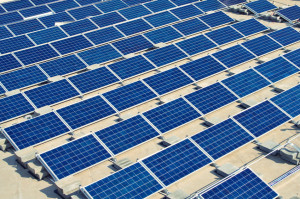How climate change changes roofing choices
 A warming climate is affecting every aspect of life and the economy. It’s not just higher temperatures than we’re used to. It’s also colder temperatures, more rain, longer droughts, more powerful storms and more extreme weather events. These will affect everyone and every profession, including the roofing consultant.
A warming climate is affecting every aspect of life and the economy. It’s not just higher temperatures than we’re used to. It’s also colder temperatures, more rain, longer droughts, more powerful storms and more extreme weather events. These will affect everyone and every profession, including the roofing consultant.
The main job of the roofing consultant is to decide on the roof design and construction methods and materials that will ensure the building will be able to withstand the environment and climate for the long term. The roofing consultant today has to consider a greater range of conditions that the roof will have to endure.
Effect of climate change on roofs
The National Oceanic and Atmospheric Administration (NOAA) has recorded an increase in significant storms every year for the past several years. It also predicts this trend will continue. This means roofs will have to endure heavier snowfall, rainfall, stronger winds and other extremes more frequently than roofing consultants are used to considering.
Another impact is that there will be more frequent snowfalls in areas that don’t normally get snow, and more frequent heavy and extreme snowfalls in areas that are used to a certain amount of snow every year. Many regions of the United States can also expect more ice storms, which can be especially damaging to roofs.
In general, the changing climate will mean more extreme climate and weather events. Some dry areas will get even dryer, while wet areas will get wetter. (Some areas that are relatively wet will dry out, as well.)
More rain and storms can lead to more leaks at roof-wall connections.
Wetter weather and more frequent rainfall could increase algae growth, which can discolor roofs — another impact that the roofing consultant will have to take into account.
Another impact that can pose a challenge to the roofing consultant is that more frequent storms and extreme weather can cause a shortages in building materials. This could lead to increased costs for roofing materials, and prompt changes in choices for not only materials, but construction methods, as well.
Responses from the roofing consultant
Roofing consultants today must consider the environmental impact of roofing design decisions. For environmental as well as life-cycle and economic reasons, there is more demand to move away from low-cost materials and practices that lead to roofs with shorter lifespans, have to be replaced more frequently and cannot be reused or recycled.
Roofing consultants are already looking at and recommending shifts in roofing materials. The use of algae-resistant asphalt shingles is growing in many regions, for instance.
More energy-efficient materials and construction techniques are being demanded by owners and builders, not only for their environmental benefits, but also to reduce the life cycle costs of the building.
Locally sourcing construction materials is another trend that reduces the environmental impact and costs of transport.
Different roofs
There has been a lot of discussion about painting roofs of houses as well as commercial and industrial buildings white or another lighter color as a way to reduce the “urban heat island” effect. It’s been known for over a century that large cities are warmer than the surrounding countryside. Part of the reason is that dark asphalt on roads and roofs absorb more heat than do grass, trees or crops.
Lighter colored roofs can reflect more heat and sunlight, reducing the extreme temperatures of cities by 2 to 3 degrees Celsius. They can also reduce the demand on cooling the interior. On the other hand, they may increase the need for heating in the winter.
Roofing consultants are also looking at completely different roofing materials. One is Ethylene Propylene Diene Monomer, or EPDM. This rubber-based material is flexible, watertight, energy efficient, and resistant to heat, UV radiation and thermal changes.
Energy-producing roofs are also trending. These are outfitted with solar panel arrays or wind-capturing equipment.
Roofing consultants are also recommending “green roofs,” also known as living roofs or roof gardens. In other words, covering the roof with plants that can be sustained with minimal maintenance. They can add to the insulation property of the roof, reducing heating and cooling costs, and help manage storm water while reducing the urban heat island effect.
Make the trends work for you
Climate change is driving changes in building design and construction. At McNeil Engineering, our roofing consultants are always staying at the leading edge of new materials and best practices to deliver the best value.

